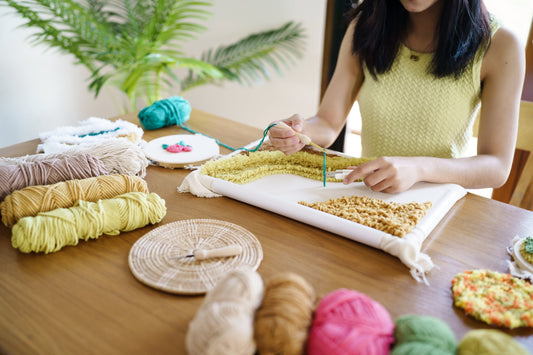
All About Craft Resin Safety
Crafting with resin is a lot of fun. Every time you open up a resin kit bottle or sanding a cured masterpiece, you must follow safety precautions when using resin.
Not to worry. These are helpful tips. No pointless warning signs here.
Adequate ventilation
When dealing with resin, make sure the air in your workspace is moving. If you can, open a window or use a fan. Or even work outdoors....
Put on some gloves.
You must shield your hands from any irritants because resin contains chemicals. Although latex gloves also work well, I prefer nitrile gloves since they are less likely to react with the resin.

All about protective clothing and PPE
Resin can harm your skin and seep through to your garments. Drips of resin won't wash out of garments or footwear, so be sure to wear a good quality arts and crafts apron!
Only identify goods as resin
Beautiful resin moulds may be created using silicone baking moulds. However, you shouldn't use them with food again after using them with epoxy resin. The same holds true for mixing jars and equipment.
Do I need a respirator?
You can find out if you need to use a respirator when working with the resin by consulting the product safety data sheet (SDS). Even if the SDS does not advise it, wear one if it makes you feel safer. Never err on the side of safety. The best type would be one that has a N95 or N95 equivalent rating and they come in disposable single use N95 masks or reusable respirator masks where you can replace the cartridge.
A piece of advice: Avoid using resins without SDS. The risk is not worth your health.
Wear safety glasses
If a resin demands the use of a respirator, you must put on safety eyewear. If you are using power tools or sanding resin, you should also wear them. Safety Goggles without vents will protect eyes from resin splashes and fumes.
Clean up spills right away.
I know how it is. Your resin is warming up after you added the ingredients. You can't stop to mop up a spill because of time constraints. However, you don't want to risk another person's safety by allowing them to get resin on themselves.
Additionally, once it begins to cure, cleanup will be more difficult.
Wear a particle mask or respirator when sanding resin.
You can get a particulate mask from a home improvement store to wear while hand sanding. Wear a respirator with particle cartridges if you're using power tools to sand.
Hot tip: Depending on the type of resin sanding you're doing, you can use the same respirator while switching out the cartridges.
Carefully handle solvents
Likewise, solvents are chemicals. What happens when you combine different chemicals? occasionally nothing. Although not always.
To remove resin from a hard surface, use acetone or denatured alcohol. However, avoid using them on your hands. They could result in a skin rash.



